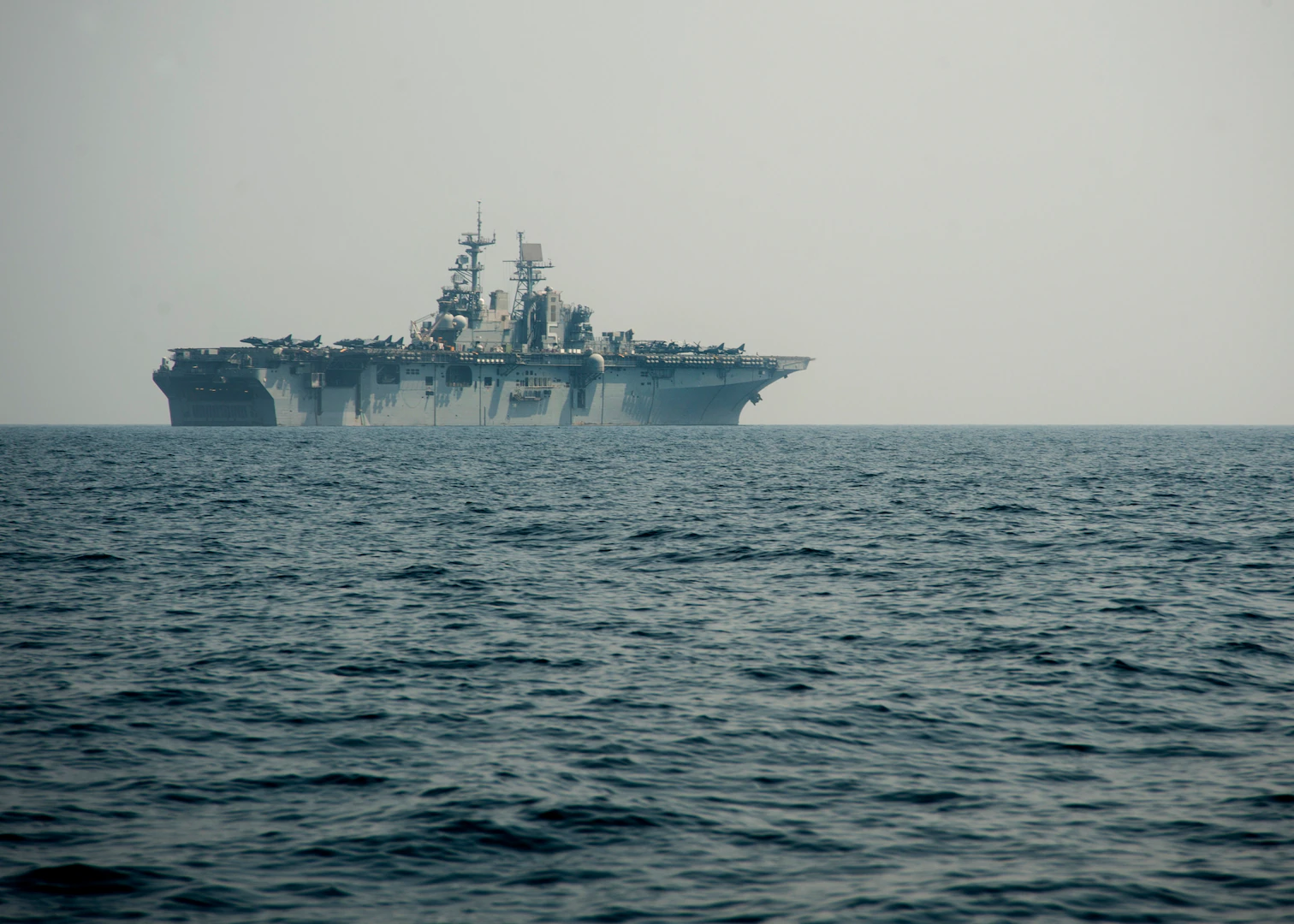The crew of USS Bataan (LHD 5), supported by the Naval Sea Systems Command (NAVSEA), recently completed the first metal 3D part fabrication and replacement for a de-ballast air compressor (DBAC) in only five days using her permanently installed metal 3D printer.
“This success story shows the self-sufficiency we can achieve when our Sailors are provided with cutting-edge technology,” said Rear Adm. Joseph Cahill, commander, Naval Surface Force Atlantic (SURFLANT). “The impact technology like this can have on operational readiness, particularly in a combat environment where logistics capabilities will be challenged, is critically important.”
The part, a sprayer plate, is part of a DBAC which is used to force pressurized air through saltwater tanks and discharge the accumulated saltwater. The tanks are filled to lower a ship’s draft for amphibious operations. Producing the sprayer plate while at-sea enabled the ship to mitigate the time spent obtaining a replacement assembly.
“Rapidly learning how to utilize AM shipboard and scaling these capabilities is a key enabler to us sustaining our platforms and weapons systems,” said Rear Adm. Jason Lloyd, deputy commander for NAVSEA’s Naval Systems Engineering & Logistics Directorate. “I am excited to see how Bataan embraced this technology to enhance readiness at the point of need.”
The printer, installed under a joint effort between SURFLANT and the NAVSEA Technology Office, includes the Phillips Additive Hybrid system, which integrates a Meltio3D laser metal wire deposition head on a Haas TM-1 computer numerical control mill. The Haas TM-1 platform has been proven to operate reliably in an afloat environment aboard several aircraft carriers. Integrating the Meltio 3D deposition head with the Haas TM-1 provides both an additive and subtractive manufacturing capability within the same system, increasing efficiency and reducing waste when compared with typical machining.
The repair effort, led by Machinery Repairman First Class Mike Hover, began by creating a computer aided design (CAD) model of a sprayer plate from a functional sprayer plate from one of the ship’s other DBAC systems. After creating a preliminary CAD model, Hover leveraged NAVSEA’s ‘Apollo Lab’ construct established for engineering and fleet support and training.
NAVSEA established the “Apollo Lab” in 2018 for engineers to better support forward-deployed sailors. The Apollo Lab, led by NAVSEA field activity Naval Surface Warfare Center, Carderock Division, Johns Hopkins University Applied Research Laboratory (JHU APL), and Building Momentum, provides distributed, reach-back engineering support by civilian engineers for AM equipment. Apollo Lab also supports the fleet by designing AM components to be made by sailors at sea.
Bryan Kessel, a mechanical engineer at Naval Surface Warfare Center, Carderock Division, refined the CAD file, worked with JHU APL to develop the software instructions to guide operation of the metal 3D printer and securely transferred those instructions back to the ship to produce and install the sprayer plate.

